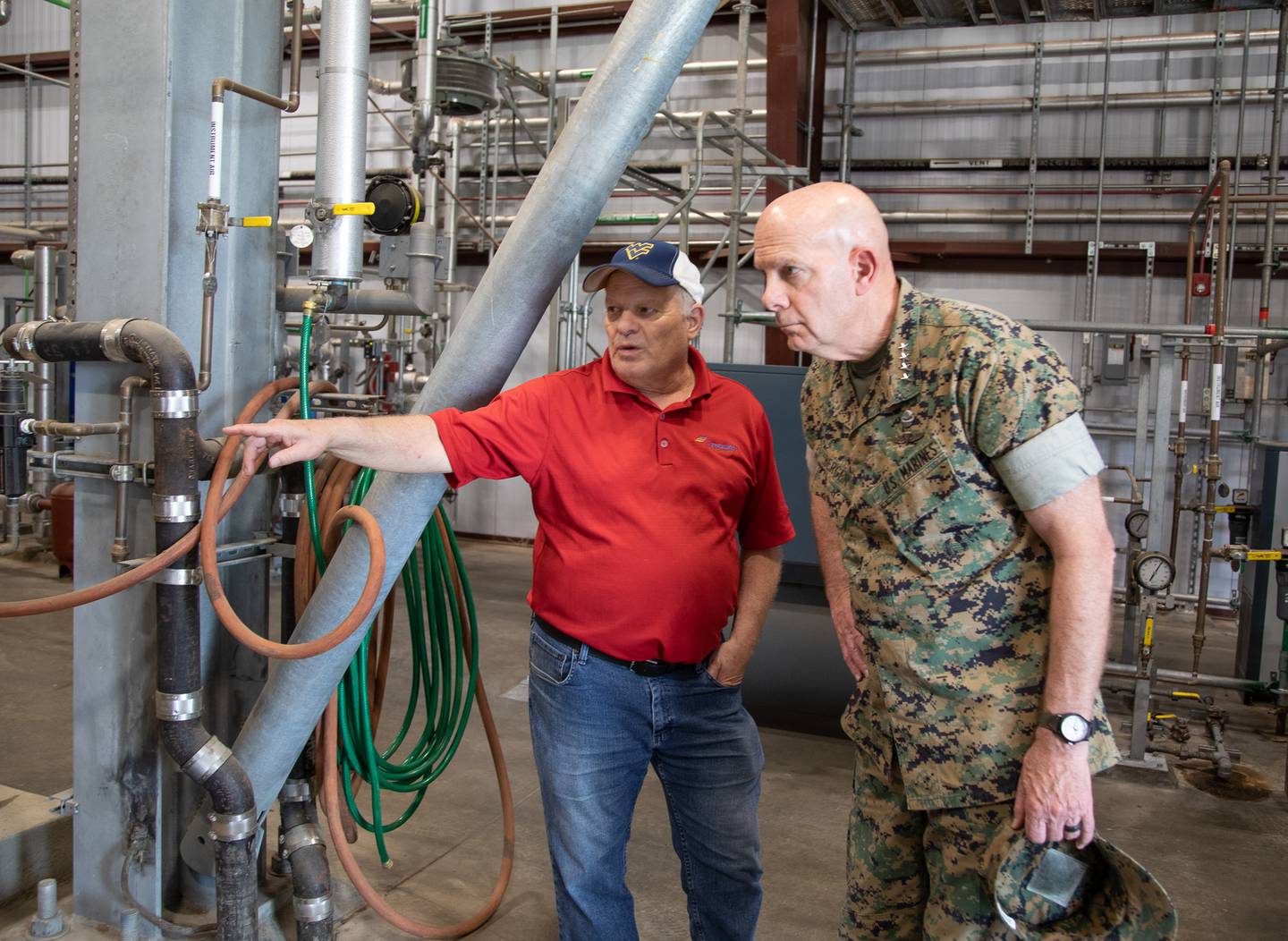On America’s East Coast, low country and high tides in South Carolina at the Marine Corps Recruit Depot on Parris Island threaten the survivability of one of our most critical installations. Meanwhile, on Fiji’s north coast, flooding and erosion forced the total abandonment of the village of Vunitogoloa eight years ago, forcing its inhabitants to leave homes and history in its wake. These threats — a world and nearly a decade apart — have a common cause: the climate crisis.
The climate crisis is a threat we know well at the U.S. Department of the Navy: It impacts our mission, our people, our platforms and our installations. As secretary of the Navy, I have three enduring priorities: strengthen our maritime dominance, empower our people and strengthen our strategic partnerships. These priorities serve a driving purpose in my comprehensive strategy “Climate Action 2030,” which I signed earlier this year.
The approach builds on the department’s history of leadership and partnership on climate and energy. It commits us to ambitious action across the entire enterprise to combat what both President Joe Biden and Defense Secretary Lloyd Austin have identified as an “existential threat.” It is against this backdrop that I will visit the South Pacific and Oceania region this week.
I will travel to Fiji, Australia and New Zealand to meet with officials and speak with citizens who know this existential threat better than most. We, as Pacific nations, are bound by common dependencies, understandings and challenges — and a common future.
Sea level rise, warmer temperatures, recurring flooding, wild fires, and more frequent and destructive storms challenge our livelihoods and our ability to operate individually and together. Flooding and saltwater intrusion droughts, reduced potable water supplies, and increased water- and food-borne disease can be factors that quickly imperil community health and welfare and can lead to national and regional instability.

As the stakes and seas rise, the Navy and Marine Corps remain at the ready. The Navy has addressed real-time drought challenges in places such as the Republic of the Marshall Islands, addressing water distribution system maintenance problems and providing water catchment and low-cost residential water purification techniques.
Additionally, the United States Naval Construction Battalions, better known as Seabees, are working with partners to adapt and build resilience throughout the region to buttress themselves against the climate crisis, helping to build renewable energy microgrids as well as shoreline and wetlands improvements. The Marine Corps, the nation’s crisis response force, trains all year to be prepared to respond to any disaster or threat anywhere around the world.
We treat our neighbors as we treat ourselves, applying the same expertise, technology and protection, but not at a cost to our neighbors’ people, security or integrity. While this seems to be the correct and only way to work in partnership with other nations — amid China’s debt-trap diplomacy tactics that leave countries owing a large portion of their public debt to Beijing — doing the right thing for the right reason at the right time bears clarifying, repeating, elevating and prioritizing.
Partnership is symbiotic: Not only do we see opportunities to share our learning, but we see the opportunity to learn from our partners who have advanced and diverse perspectives on the climate crisis we are all confronting. The Office of Naval Research’s Asia-Pacific Technology and Education Partnership program is one way we are doing that. This entity has been building partnerships around climate change challenges in Asia-Pacific countries for over a decade, including Thailand, Vietnam, Laos, the Philippines, Australia and Japan.
APTEP has created a forum for exchange through a consortium of international universities, utilities and governmental institutions, exchanging technical and educational information and providing opportunities for regional and U.S. experts to work among and learn from each other. These partnerships are now implementing practical solutions to climate change challenges, with U.S., regional and local experts working side by side.
That is not to say these nations care about our efforts to combat the climate crisis only if undertaken in Oceania. They understand better than most that the climate crisis is a global one. The Department of the Navy’s efforts in Norfolk, Parris Island, San Diego or at sea to help in the fight against the climate crisis are just as important. That is why I am eager to share stories about Marine Corps Logistics Base Albany, which just became our first net-zero energy base; about our research into hybrid propulsion for our ships; and about how the Navy-Marine Corps team is leveraging our massive size to demand more renewable energy generation.
In my years of service, I learned one hard and fast rule of leadership: You must lead with empathy and from a place of commonality. A leader’s duty is to be a force for positive change, even under the most difficult of circumstances. The Navy-Marine Corps team has a proud tradition of leading — and succeeding — even when the odds seem long. I see the same instinct in my fellow Pacific leaders. We know that by working together we can contribute to and learn together as we face the climate crisis together.
During my visit to meet with our friends in the Pacific, I look forward to reaffirming the strength of our partnership and enhancing and expanding opportunities for us to continue working together. Through partnership, shared values and determination, we can make a positive difference.
U.S. Navy Secretary Carlos Del Toro served with the service for 22 years and founded SBG Technology Solutions in 2004.








